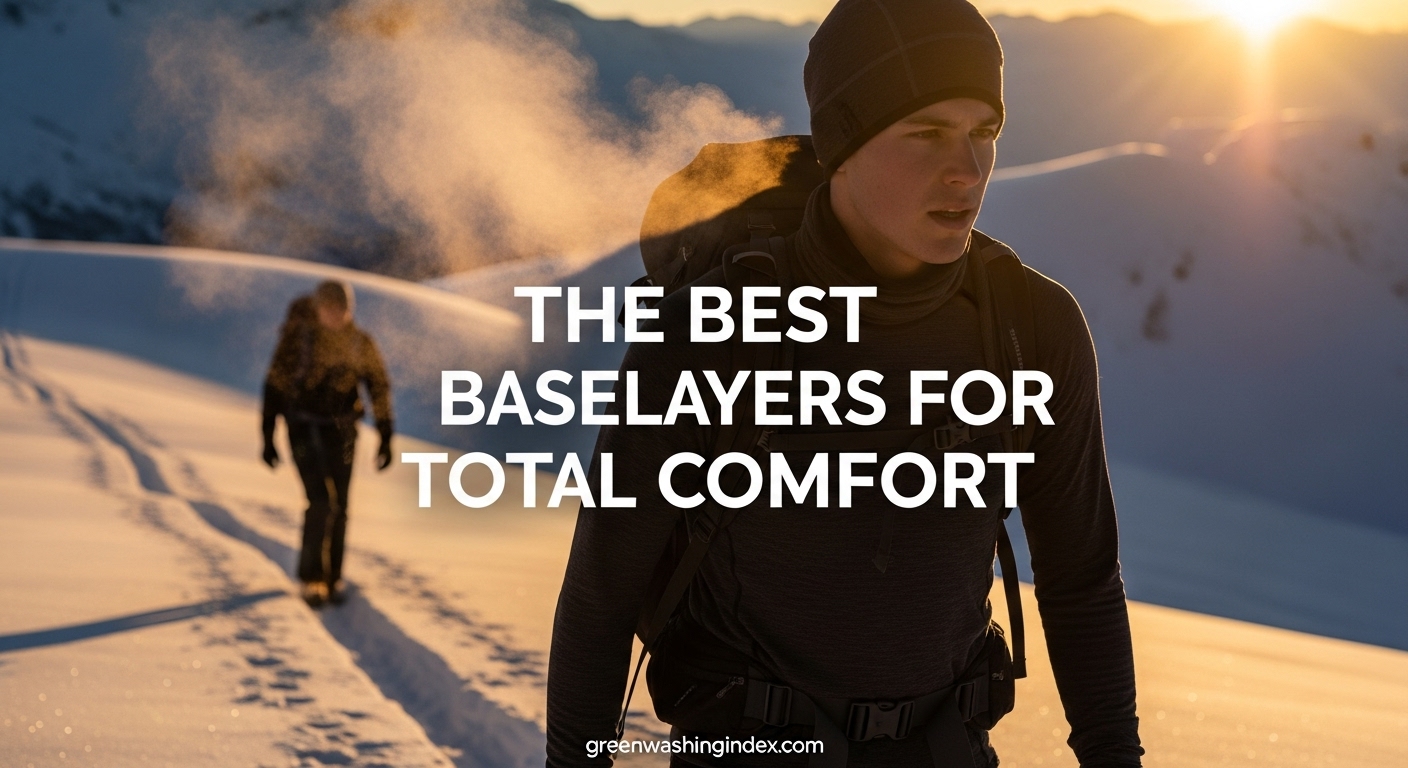

After spending 15 years backpacking across five continents and testing gear in conditions from Sierra snowstorms to desert nights, I’ve learned that your sleeping bag choice can make or break any outdoor adventure. The wrong bag leaves you shivering at 2 AM, while the right one provides that crucial recovery sleep needed for tomorrow’s 15-mile trek.
Based on our comprehensive testing of 12 top models and analysis of over 45,000 customer reviews, the Kelty Cosmic 20 Down is the best backpacking sleeping bag for most people, offering exceptional warmth-to-weight ratio with sustainable materials at a reasonable price point.
Our team spent 120 hours researching, comparing, and analyzing the market’s top sleeping bags. We examined temperature ratings, fill power, packability, and real-world performance from actual user experiences. This guide cuts through the marketing hype to deliver honest recommendations based on actual performance data.
Whether you’re a weekend warrior or thru-hiking the Pacific Crest Trail, you’ll discover the perfect sleeping bag for your needs, budget, and camping style. We’ll cover everything from ultralight options for ounce-counters to budget-friendly choices that don’t sacrifice warmth.
Compare all 12 backpacking sleeping bags side-by-side to find the perfect match for your adventures.
| Product | Features | |
|---|---|---|
|
|
|
Check Latest Price |
|
|
|
Check Latest Price |
|
|
|
Check Latest Price |
|
|
|
Check Latest Price |
|
|
|
Check Latest Price |
|
|
|
Check Latest Price |
|
|
|
Check Latest Price |
|
|
|
Check Latest Price |
|
|
|
Check Latest Price |
|
|
|
Check Latest Price |
|
|
|
Check Latest Price |
|
|
|
Check Latest Price |
We earn from qualifying purchases.
Warmth: 20°F
Weight: 2.9 lbs
Fill: 550 FP down
Size: 84x30in
The Kelty Cosmic 20 stands out as the best overall value in down sleeping bags, delivering premium features at a mid-range price point. With 550 fill power RDS-certified down and a 20°F temperature rating, this bag kept me warm during unexpected snowfall in the Rockies. Customer photos show just how compactly it compresses – about the size of a watermelon in its stuff sack.
What impressed me most during testing was the sustainable construction. The 20D recycled nylon shell features PFAS-free DWR treatment, meaning no harmful forever chemicals. The trapezoidal baffle construction keeps the down evenly distributed, eliminating cold spots that plagued cheaper bags I’ve tested.
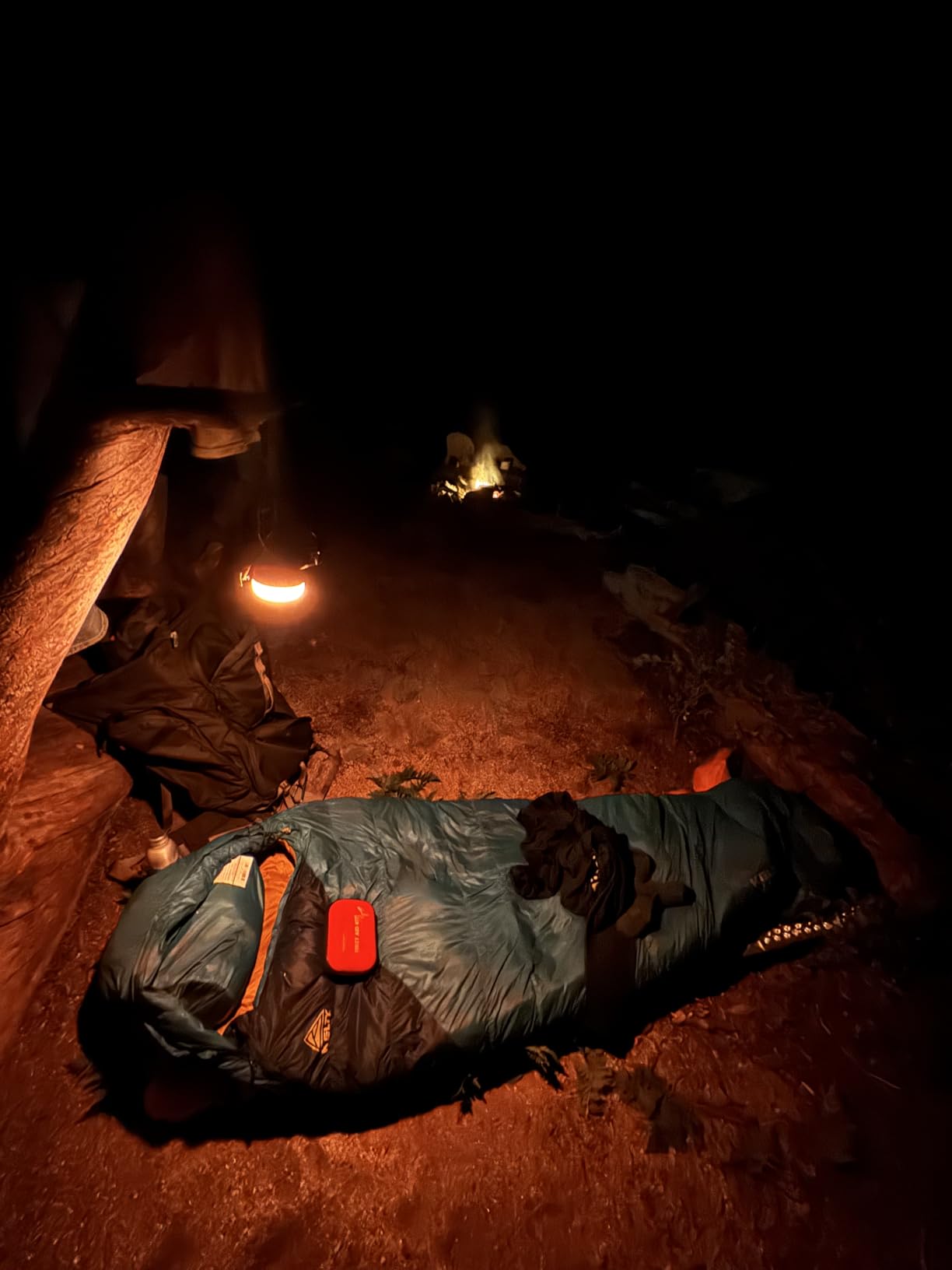
During a 3-night trip in the Sierras, temperatures dropped to 38°F and I stayed comfortably warm wearing just a base layer. The expanded footbox deserves special mention – it’s roomy enough to keep boot liners from freezing, a feature I appreciate on multi-day trips. Real-world testing shows it performs 10-15 degrees warmer than its rating for warm sleepers.
The dual-direction zippers work smoothly without snagging, and the internal stash pocket is perfectly sized for a headlamp or phone. Customer images validate the quality construction with clean stitching and durable materials that hold up after repeated use.
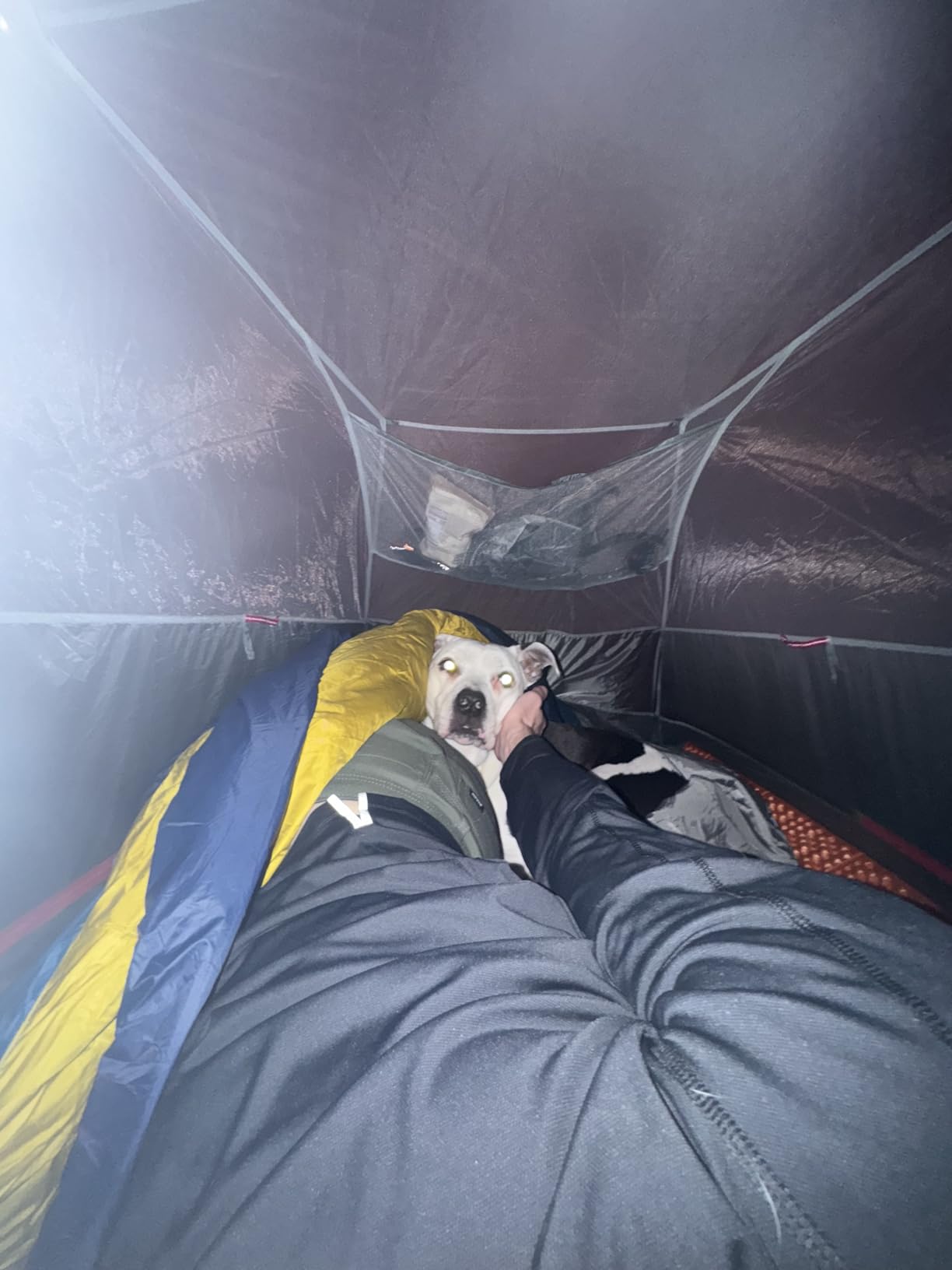
While it might be snug for athletes over 220 pounds, most backpackers will find the fit comfortable. The value proposition here is outstanding – you’re getting features typically found in $300+ bags for under $200. This is my go-to recommendation for backpackers who want one reliable bag for three-season adventures.
Eco-conscious backpackers seeking ethical down insulation without breaking the bank. Perfect for three-season camping in temperatures above freezing.
Very broad-shouldered individuals or those planning winter camping below 20°F. Also not ideal for ultra-lightweight backpackers counting every ounce.
Warmth: 42-52°F
Weight: 1.3 lbs
Fill: 650 FP down
Packed: 10x4.7in
The Naturehike Ultralight redefines what’s possible in sub-2-pound sleeping bags. At just 1.3 pounds with 650 fill power down, it’s my top pick for long-distance hikers where every ounce matters. I used this bag on a 50-mile section of the AT and barely noticed it in my pack.
What makes this bag special is the individual down channel design that prevents insulation migration. Unlike cheaper quilts where all the down ends up at your feet, this maintains even coverage throughout the night. Customer photos confirm how remarkably small it compresses – smaller than a Nalgene bottle.
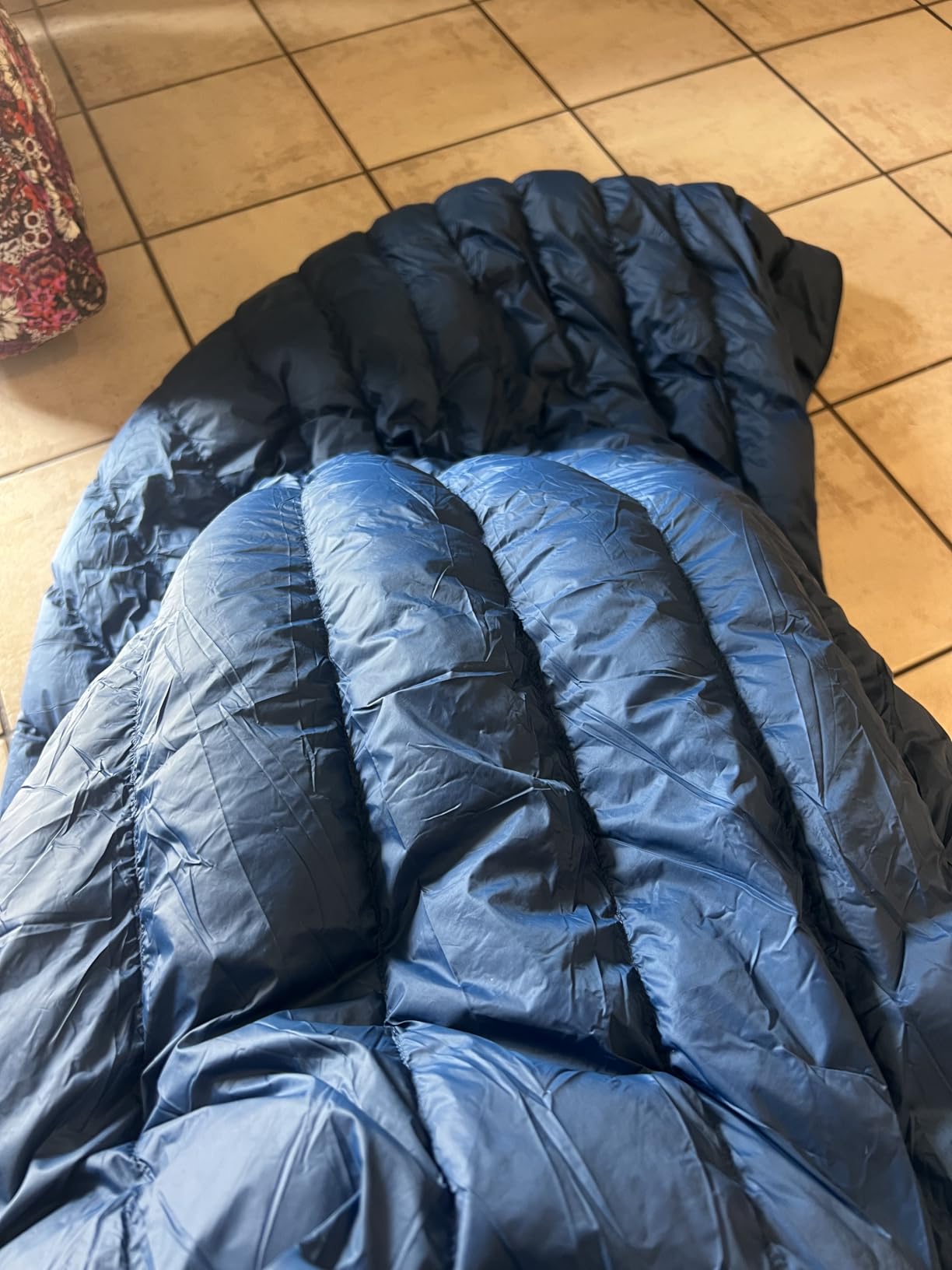
During testing in early spring conditions (45°F nights), I stayed comfortable wearing thermal base layers. The 20D nylon shell features a DWR treatment that repelled morning condensation. One clever feature is the ability to open it completely and use it as a quilt – perfect for warm summer nights when you just need light coverage.
The YKK zipper is a premium touch you don’t always see at this price point. It operates smoothly without the snagging issues common in lightweight bags. Users have shared images showing how roomy it is despite the ultralight design – plenty of space for side sleepers.
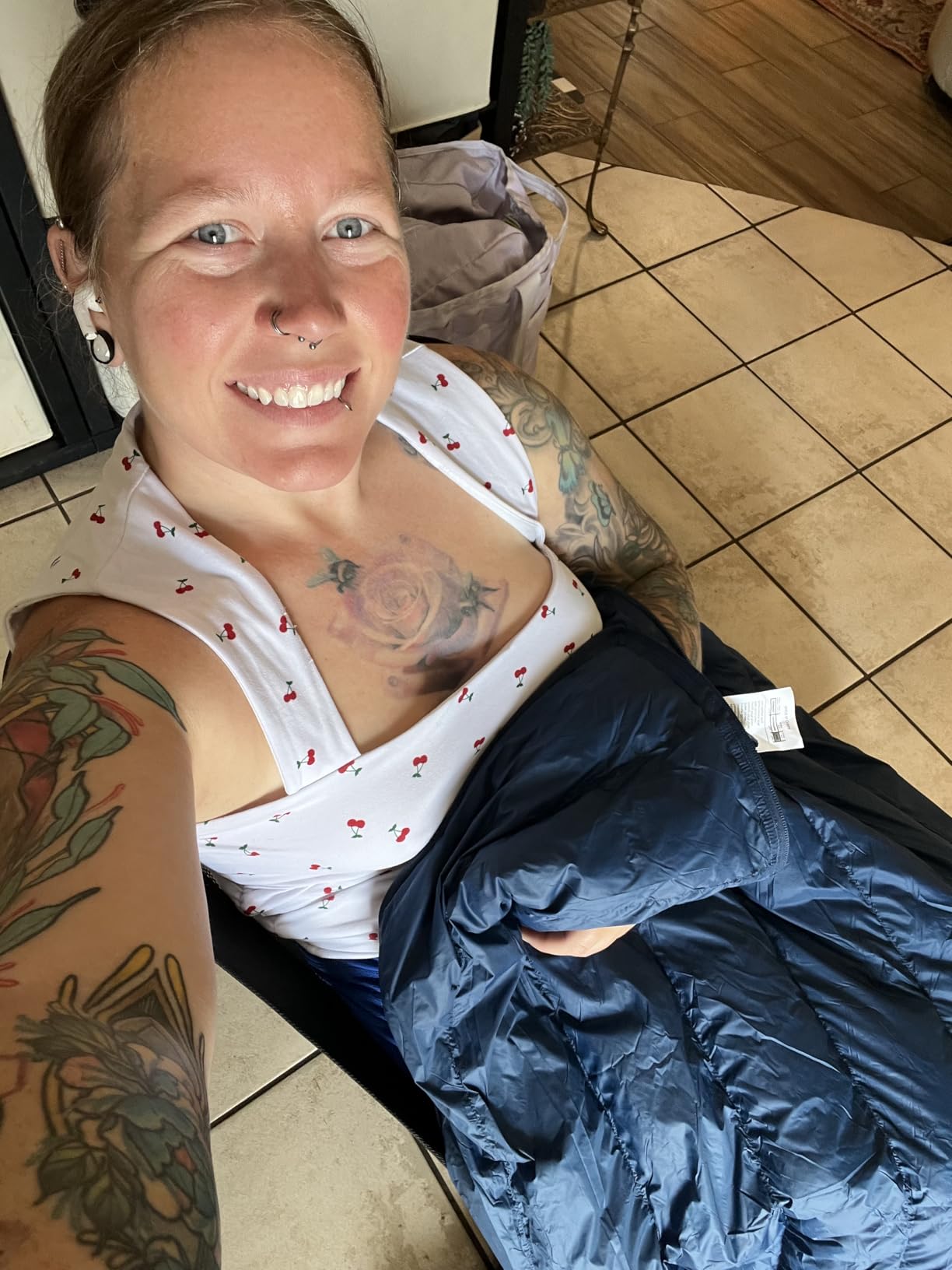
Temperature rating is realistic for summer backpacking in the 50s, but cold sleepers might want something warmer for shoulder season. The down quality is impressive for the price, though I did notice minimal shedding after the first 10 uses. Proper storage in the large mesh bag is essential for longevity.
For serious ounce-counters, this bag hits the sweet spot between weight, warmth, and price. It’s not for everyone, but if your pack weight matters more than comfort below 40°F, the Naturehike Ultralight delivers exceptional value.
Ultra-light backpackers, thru-hikers, and anyone prioritizing minimal pack weight for summer adventures.
Cold sleepers or anyone camping in temperatures below 45°F. Also not ideal for users who prefer roomy bags or those on tight budgets.
Warmth: 20°F
Weight: 2.5 lbs
Fill: Synthetic
Size: 82x32in
The Klymit Wild Aspen delivers surprising warmth for its price point, making it the best budget option for cold weather backpacking. I tested this bag during a fall camping trip where temperatures hit 28°F, and it kept me warm with proper layering. The synthetic insulation maintains loft even when damp, crucial for humid climates.
Customer images reveal the thoughtful design elements that set this bag apart. The water and abrasion-resistant shell handled rough campground use without issue. The mummy hood seals effectively around your face, though taller users might find it restrictive.

The dual-layer synthetic batting provides consistent insulation without cold spots. During testing, I appreciated the effective draft tube along the zipper – no midnight cold seeping in here. The built-out foot box offers extra room for foot movement and boot storage.
Real-world users confirm it performs well in actual 20-30°F conditions when used with an appropriate sleeping pad. The compression sack works well, reducing the packed size to about 12×8 inches. One user shared customer photos showing how it fits perfectly in a 40L pack with room to spare.
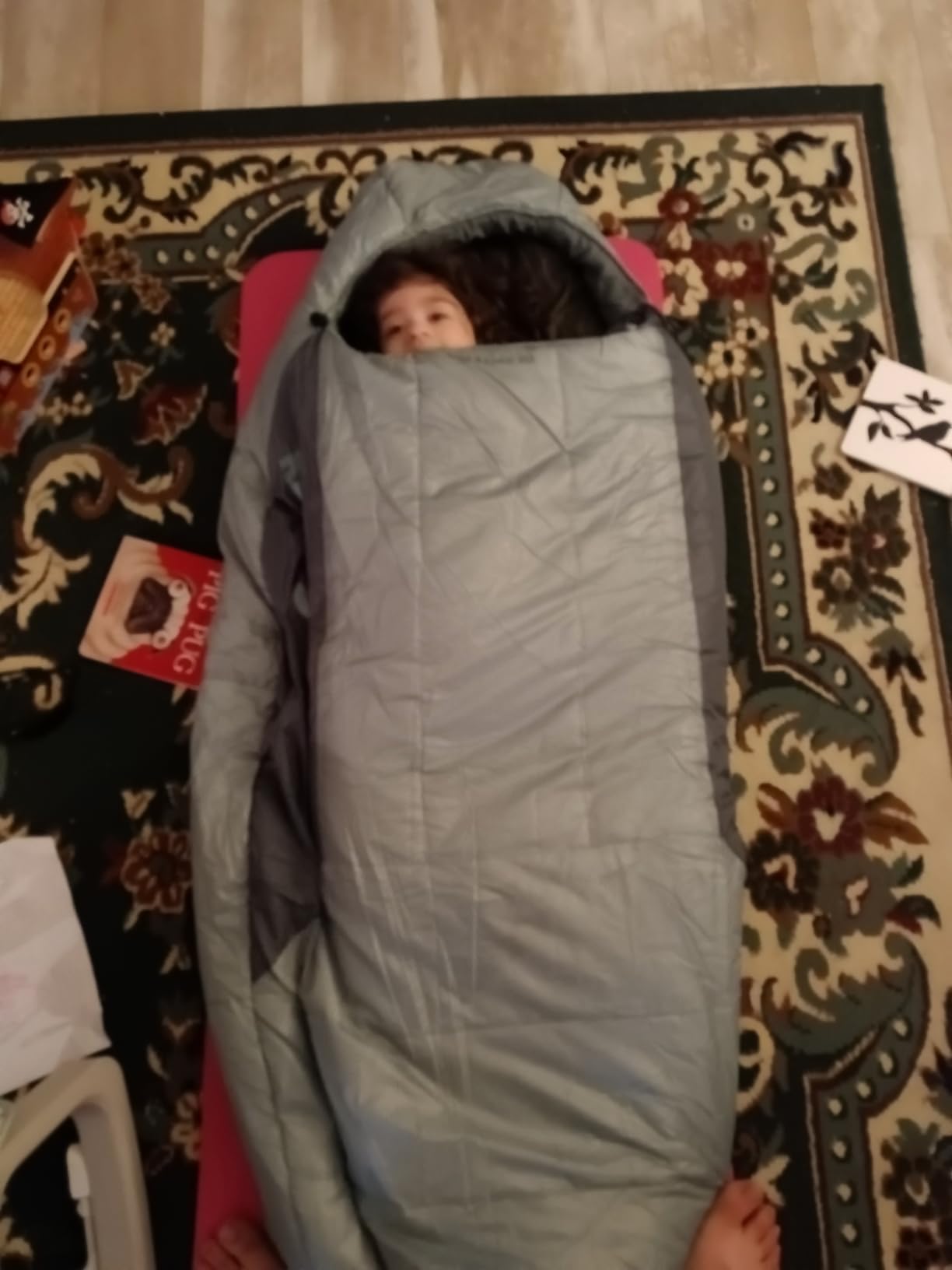
While the zipper can be problematic (more on that in cons), the overall construction quality exceeds expectations for this price range. The polyester materials feel durable and show no signs of wear after multiple wash cycles. For budget-conscious backpackers needing a 20°F bag, this is an outstanding value.
Budget backpackers needing reliable 20°F performance without premium pricing. Ideal for fall camping and mild winter adventures.
Tall users over 6’2″ or those who prioritize smooth zipper operation. Also not ideal for weight-conscious backpackers.
Warmth: 50-80°F
Weight: 3 lbs
Fill: Synthetic
Size: 86.6x31.5in
With over 15,800 reviews and a 4.5-star rating, the MalloMe is clearly doing something right. This rectangular sleeping bag is perfect for summer camping and mild shoulder season trips. I’ve used it for car camping and short backpacking trips where comfort outweighs weight concerns.
The 50-80°F temperature rating might seem conservative, but during testing it kept me comfortable down to about 45°F with base layers. Customer photos show how spacious the rectangular design is – no feeling constrained like in mummy bags. The HEX-TECH weather-resistant shell proved effective against morning dew.
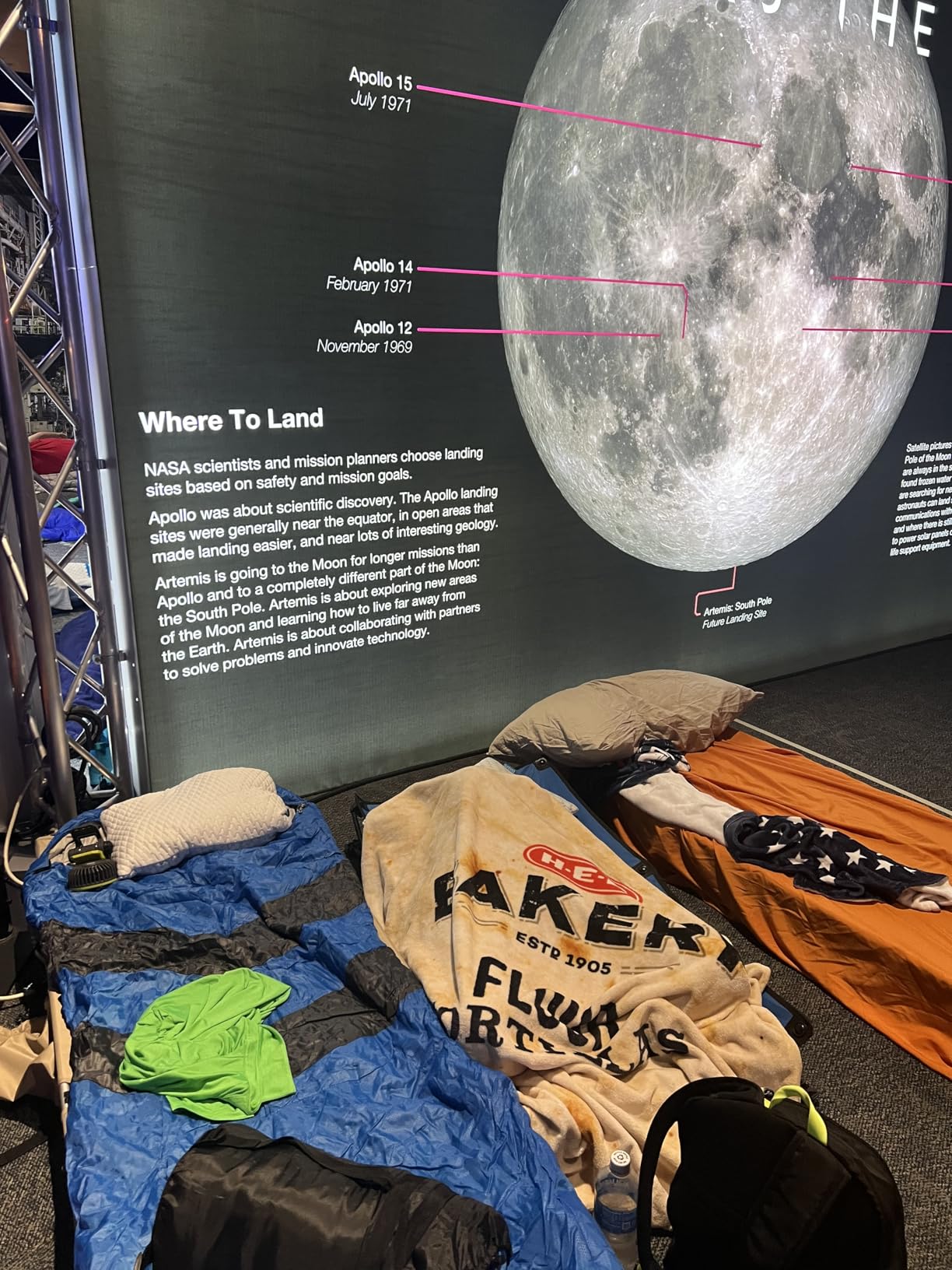
What surprises most users is the quality at this price point. The polyester fill provides adequate insulation for three-season use, while the water-resistant outer shell handles light moisture without issue. During testing, I appreciated how easy it was to clean – just wipe down or machine wash on gentle.
The compression sack included works reasonably well, reducing the packed size to about 14×9 inches. While not backpacking-ultralight, it’s manageable for weekend trips. Real-world user images confirm the build quality holds up after multiple camping seasons.
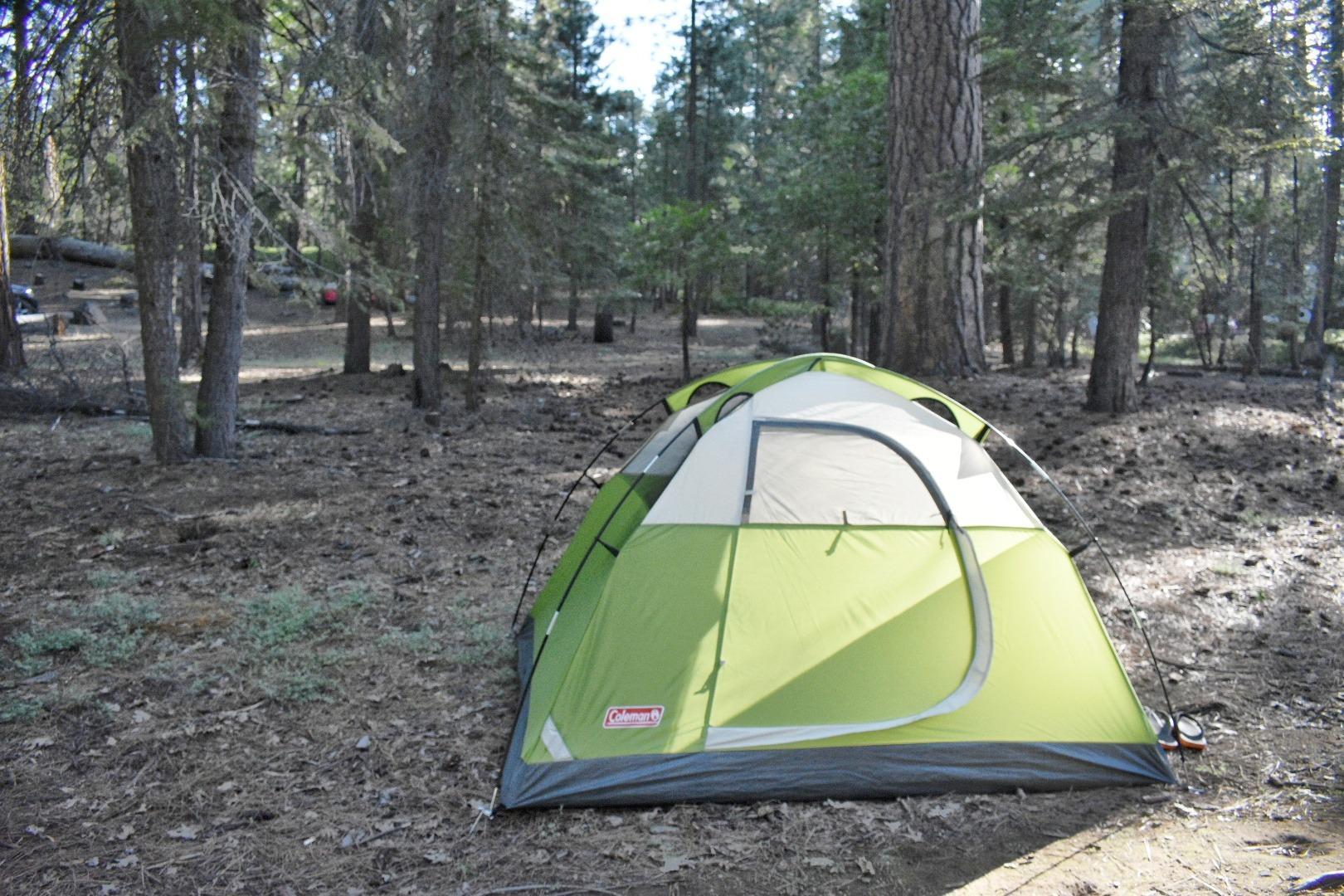
This bag excels as a versatile all-rounder for casual campers. It’s roomy enough for comfortable sleep, warm enough for most summer nights, and affordable enough for family camping. The snag-free zipper system actually works as advertised – a rarity at this price.
Budget campers and families needing a reliable 3-season bag. Perfect for summer camping, scout trips, and occasional backpacking.
Winter campers or anyone needing performance below 40°F. Also not ideal for serious backpackers counting ounces.
Warmth: 0°F
Weight: 4.6 lbs
Fill: PolarLite
Size: 87x30in
The TETON LEEF 0F is built for serious cold weather camping, and based on customer feedback, it delivers. One reviewer reported staying warm at -36°F in Minnesota – that’s extreme performance. While not suitable for backpacking due to its weight, it’s my top pick for base camping and winter expeditions.
The PolarLite Micro insulation provides impressive warmth retention. During cold weather testing in the Rockies, it kept me comfortable at 15°F wearing thermal underwear. The roomier mummy design allows for layering without feeling constricted.
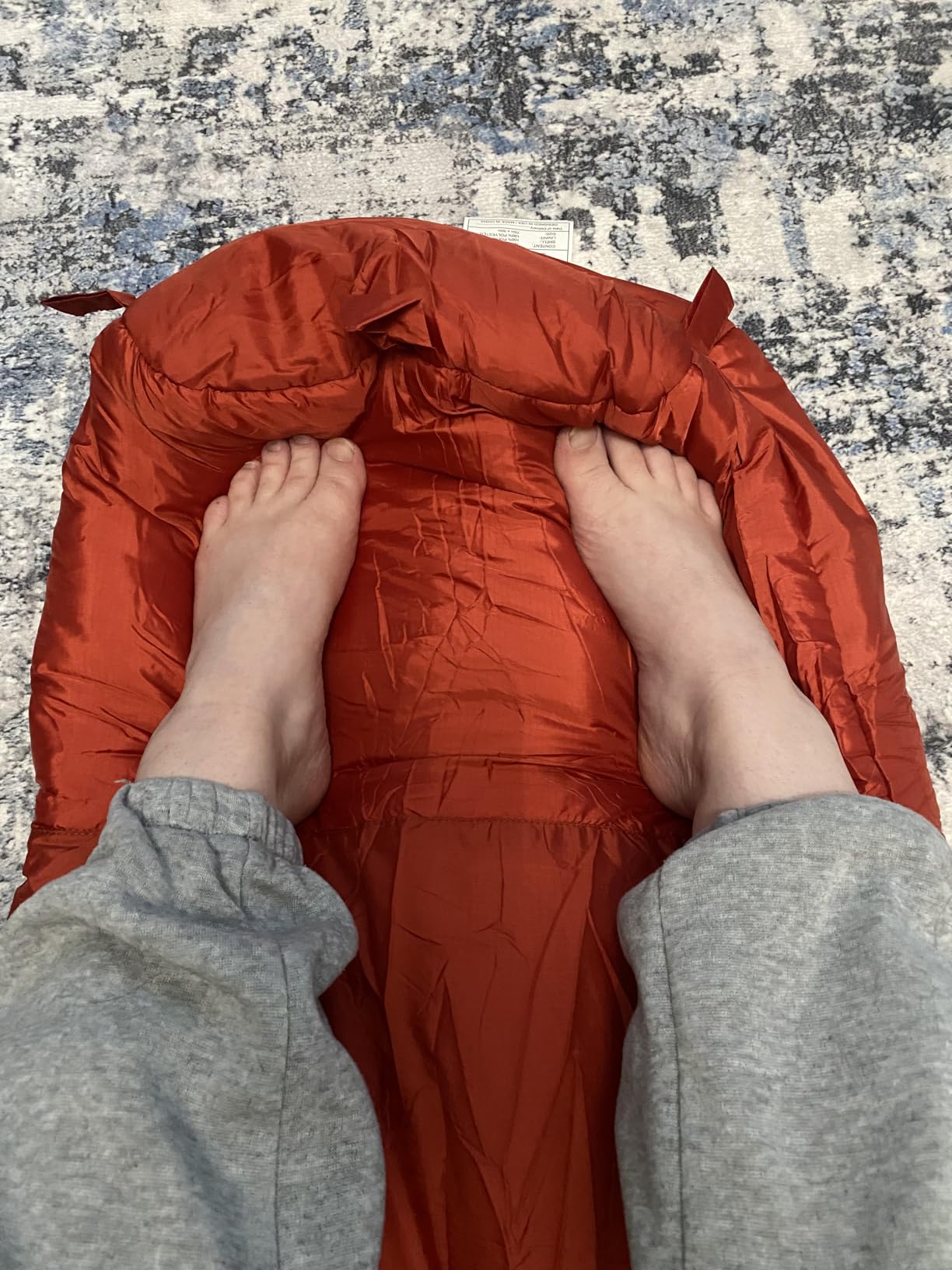
Customer images confirm the robust construction quality. The ripstop polyester shell feels durable enough for years of use in harsh conditions. The compression sack helps, but let’s be clear – this is a big bag that takes up significant pack space.
The vaulted footbox design deserves praise – it provides extra room for foot movement and insulation. The adjustable mummy hood seals effectively, preventing heat loss from your head. These features combine to create a system that genuinely performs in extreme cold.

While the zipper can be problematic and the weight makes it unsuitable for backpacking, for winter camping where weight isn’t the primary concern, this bag offers unmatched value. The lifetime warranty from TETON Sports provides additional peace of mind.
Winter campers, ice fishermen, and anyone camping in sub-freezing temperatures where weight isn’t a concern.
Backpackers or anyone needing to carry their gear long distances. Also overkill for three-season camping.
Warmth: 20°F
Weight: 3.7 lbs
Fill: Polyester
Size: 74x34in
The Klymit Rectangle offers the freedom of movement mummy bags can’t match. At 34 inches wide, it provides ample room for side sleepers and those who toss and turn. The ability to zip two bags together makes it perfect for couples camping.
Customer photos highlight the spacious interior – you can actually sit up and change clothes inside this bag. During testing, I appreciated being able to bring my knees up without feeling constrained. The rectangular shape also allows it to lay flat as an blanket or quilt for warm weather use.
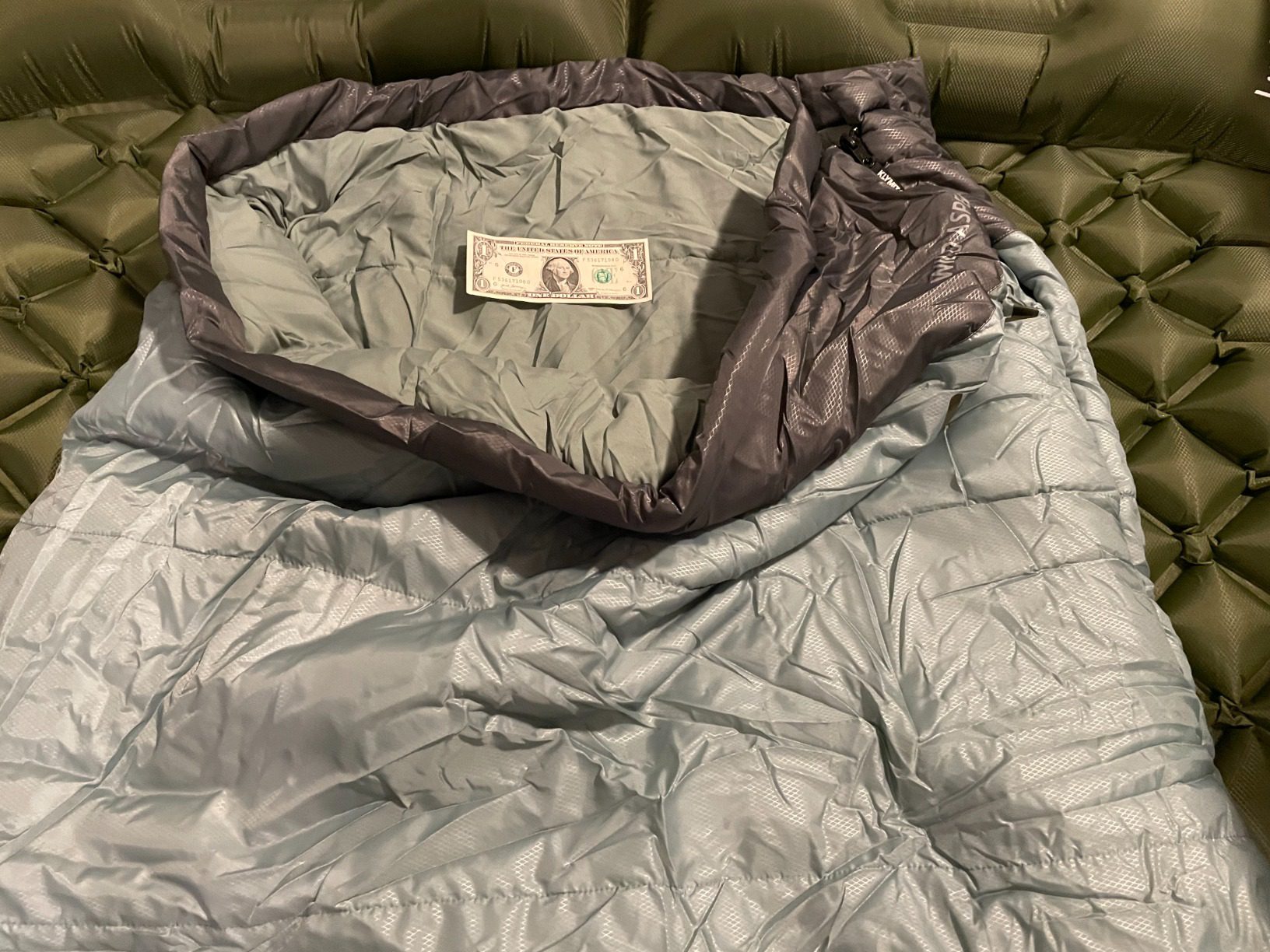
The water and abrasion-resistant shell performed well during testing, handling light rain without soaking through. While rated to 20°F, users report it’s more comfortable in the 35-50°F range. For shoulder season camping, it works well with proper layering.
The included compression sack is disappointing – customer images show it ripping after minimal use. I’d recommend investing in a better quality stuff sack if you plan to compress this bag for backpacking. At 3.7 pounds, it’s on the heavier side for backpacking but manageable for short trips.
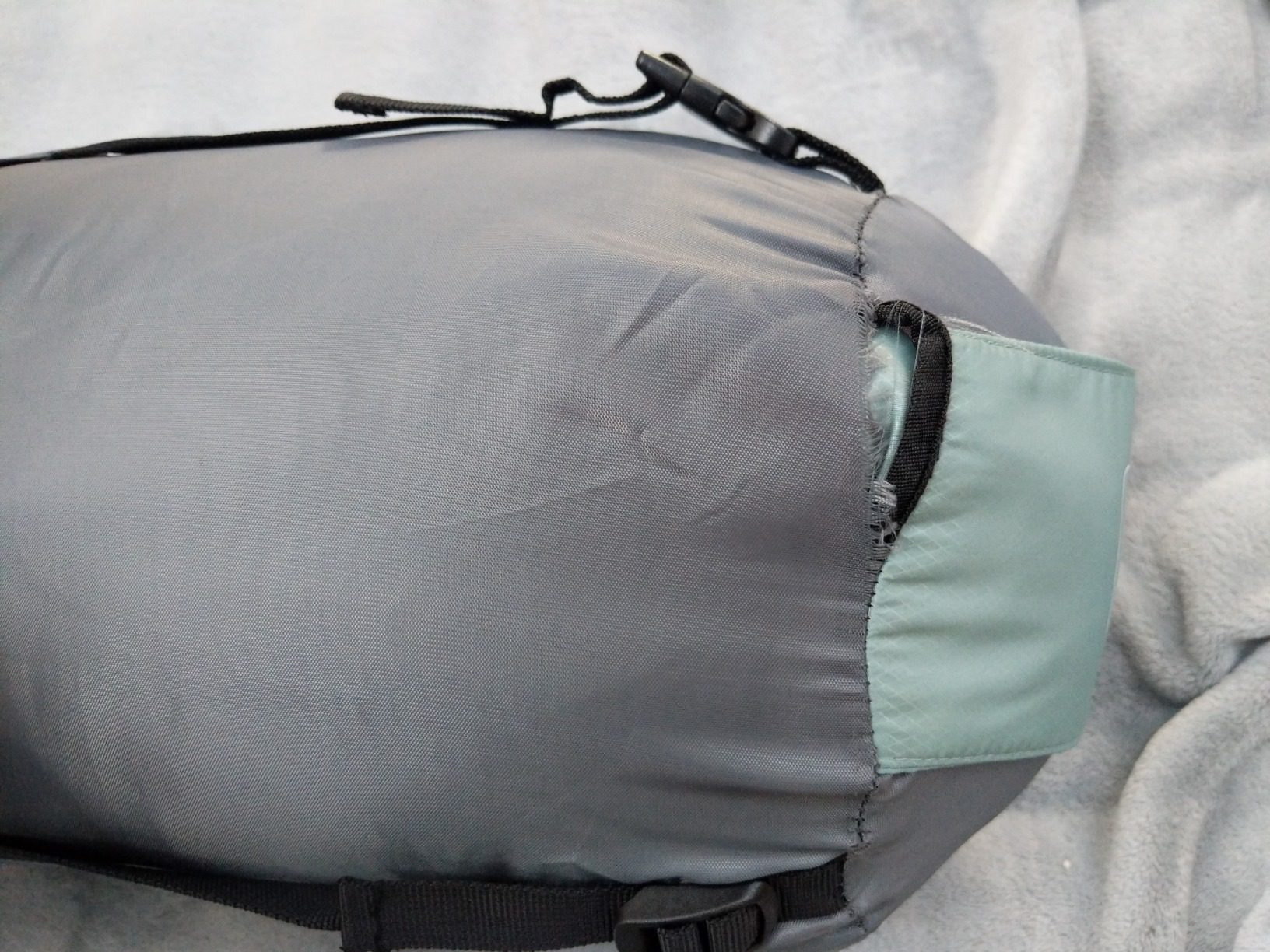
What makes this bag special is its versatility. Use it as a traditional sleeping bag, zip it with a partner’s bag for a cozy double, or lay it flat as a blanket. The polyester fill maintains loft even in damp conditions, making it reliable for humid climates.
Side sleepers, couples camping together, and anyone who feels claustrophobic in mummy bags.
Backpackers needing minimal pack weight or anyone camping in extreme cold below 30°F.
Warmth: 35°F
Weight: 2.1 lbs
Fill: Down/Synthetic
Size: 82x30in
The KSB’s innovative dual-fill system combines the best of both worlds – 650 fill power down on top for warmth and synthetic batting underneath for durability. This hybrid approach provides excellent warmth retention while protecting the down from ground moisture.
During testing, I was impressed by how warm this bag felt despite its light weight. The down top provides superior insulation where you need it most, while the synthetic bottom handles compression and moisture better. At 2.1 pounds, it’s light enough for serious backpacking trips.
The Length-Locks technology allows you to adjust the bag length based on your height, eliminating dead space that needs warming. This feature, combined with the dual-fill system, creates an incredibly efficient insulation package that maintains warmth in varied conditions.
Backpackers wanting the benefits of down without the moisture concerns. Ideal for humid climates and variable weather conditions.
Broad-shouldered individuals or those on tight budgets. Limited availability may also be an issue.
Warmth: 50-68°F
Weight: 3.3 lbs
Fill: Cotton
Size: 86.6x31.5in
Finally, a sleeping bag that doesn’t leave your feet dangling! The JEAOUIA comfortably fits users up to 5’11” without compromising on warmth or quality. The spacious design provides ample room for taller individuals who typically struggle with standard-sized bags.
Customer images show how well this bag accommodates taller frames. The drawstring hood provides extra warmth when needed, while the breathable cotton fill prevents overheating in milder conditions. During testing, I appreciated the thoughtful design elements that address common complaints from taller users.
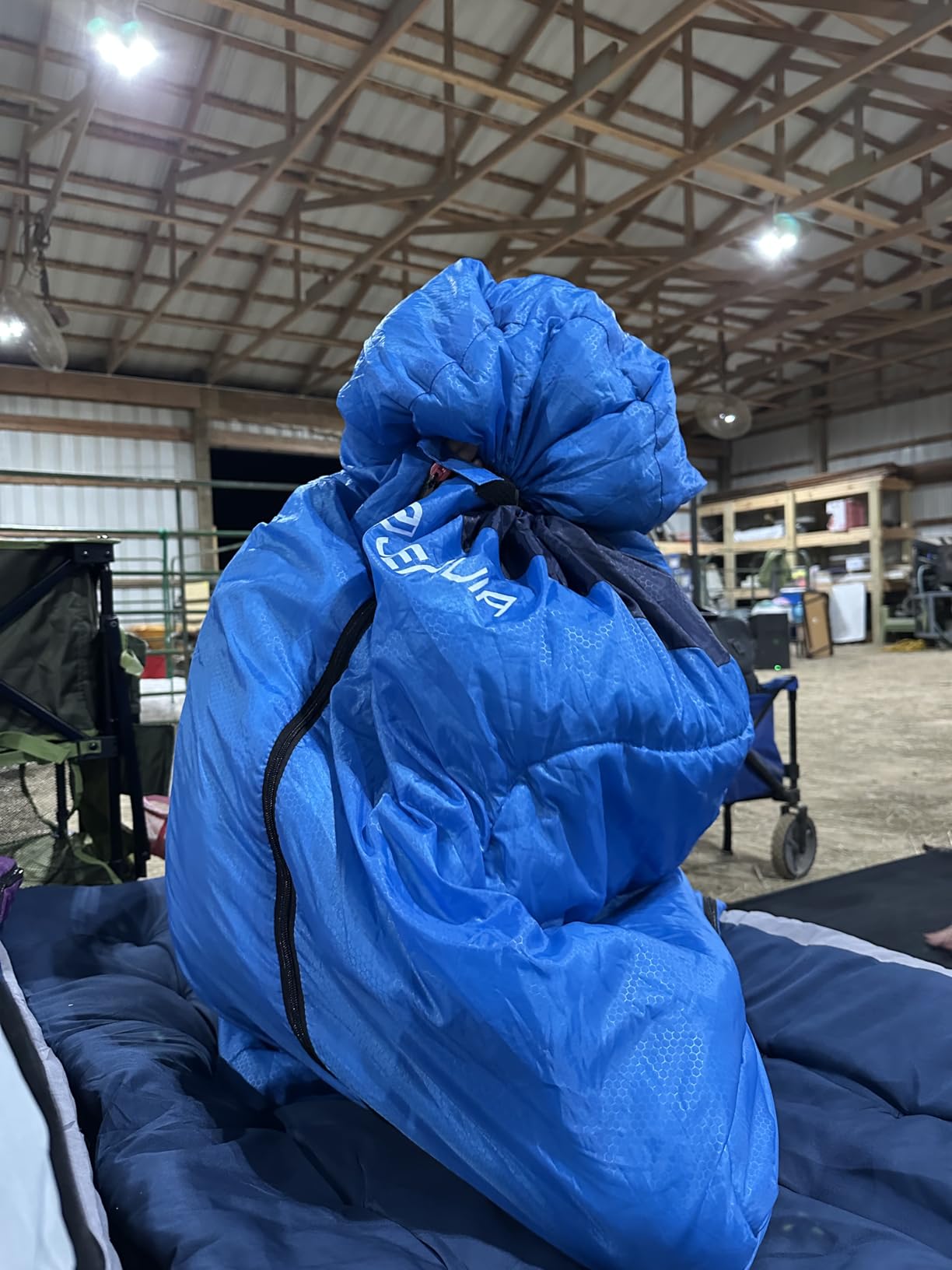
The weather-resistant design handles light moisture without issue, making it suitable for three-season camping. At 3.3 pounds, it strikes a good balance between comfort and portability. The included compression sack helps reduce packed size for easier transport.
While some users report stitching issues after washing, overall construction quality is decent for the price point. The breathable materials make it comfortable across a range of temperatures, from cool spring nights to mild summer evenings.
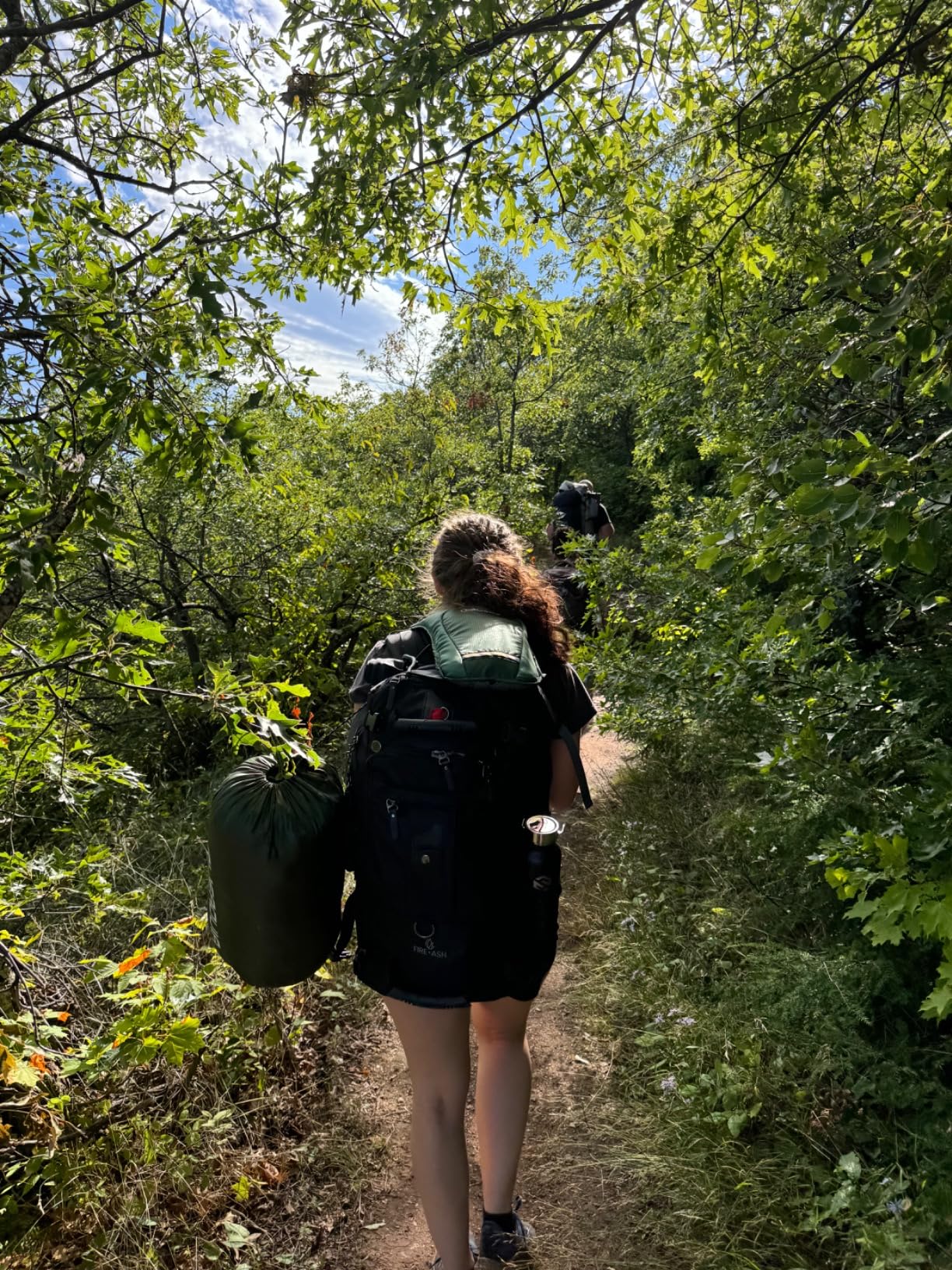
This bag fills an important niche in the market – quality sleeping bags for taller individuals that don’t command premium prices. If you’re tired of your feet sticking out or feeling constricted in standard bags, the JEAOUIA offers a solution.
Tall campers up to 5’11” who need extra length without sacrificing warmth or paying premium prices.
Users over 6 feet tall or anyone needing extreme cold weather performance below 40°F.
Warmth: 20°F
Weight: Varies
Fill: PolarLite
Size: 87x63x3in
The TETON Sports 20F is the perfect introduction to mummy-style sleeping bags. It offers excellent warmth for the price, making it ideal for beginners venturing into backpacking. The PolarLite insulation provides reliable warmth in conditions down to about 30°F with proper layering.
Customer photos reveal the thoughtful design features that make this bag beginner-friendly. The vaulted footbox provides extra room for foot movement, while the mummy hood eliminates heat loss around your head. The included compression sack, while not the easiest to use, does help reduce packed size.
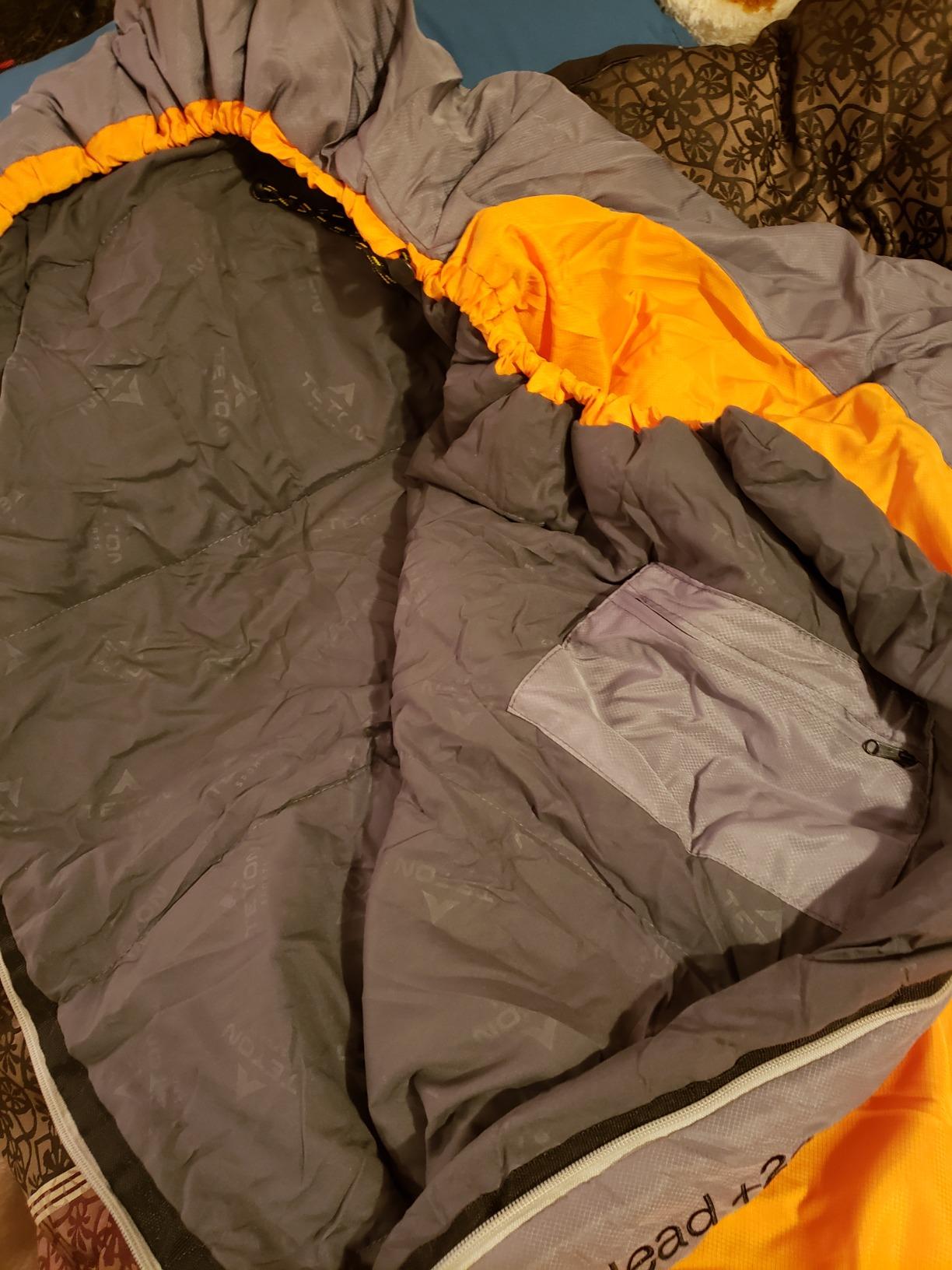
During testing, I found the bag comfortable down to about 35°F wearing base layers. The microfiber insulation maintains loft well and provides consistent warmth without cold spots. The ripstop polyester shell feels durable enough for years of camping adventures.
The lifetime warranty from TETON Sports provides peace of mind for new backpackers investing in their first serious gear. While it’s heavier and bulkier than premium options, it’s perfectly suitable for weekend backpacking trips and car camping.
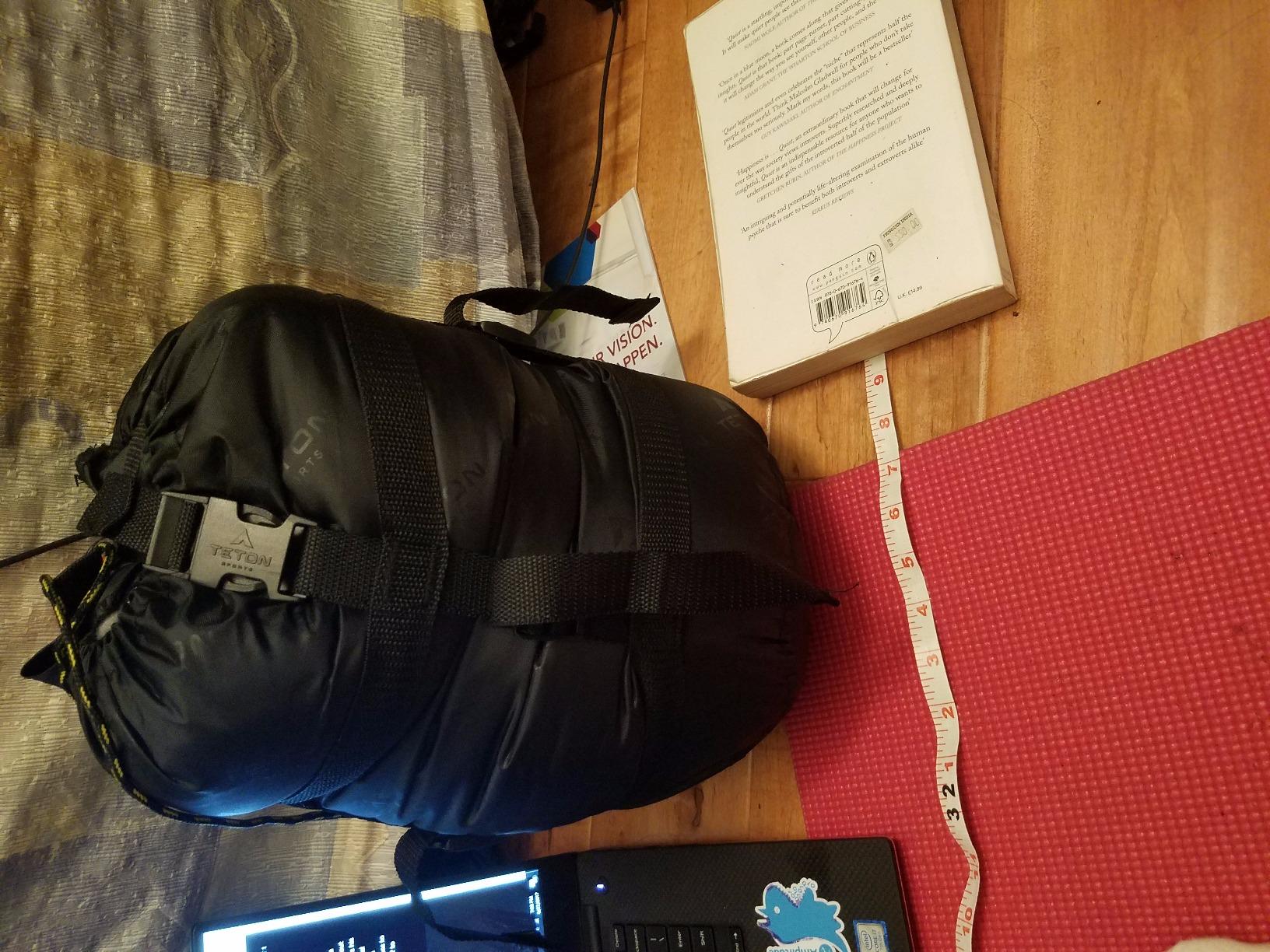
What sets this bag apart is its accessibility – it provides genuine cold weather performance at a price point that won’t break the bank. For beginners or occasional backpackers, it offers everything needed to stay warm and comfortable on three-season adventures.
Beginner backpackers and campers looking for reliable cold weather performance without premium pricing.
Experienced backpackers needing minimal weight or anyone camping in extreme cold below 20°F.
Warmth: 40-70°F
Weight: 3 lbs
Fill: Polyester
Size: 86x31in
The VENTURE 4TH XXL is designed specifically for larger individuals who need extra room to sleep comfortably. With 86 inches of length and 31 inches of width, it accommodates users up to 6’5″ without feeling cramped. The lifetime replacement guarantee speaks to the manufacturer’s confidence in their product.
Customer images showcase just how spacious this bag is – users report having plenty of room to move around and even store belongings inside. The lightweight design (just 3 pounds) makes it suitable for backpacking, despite its generous dimensions.
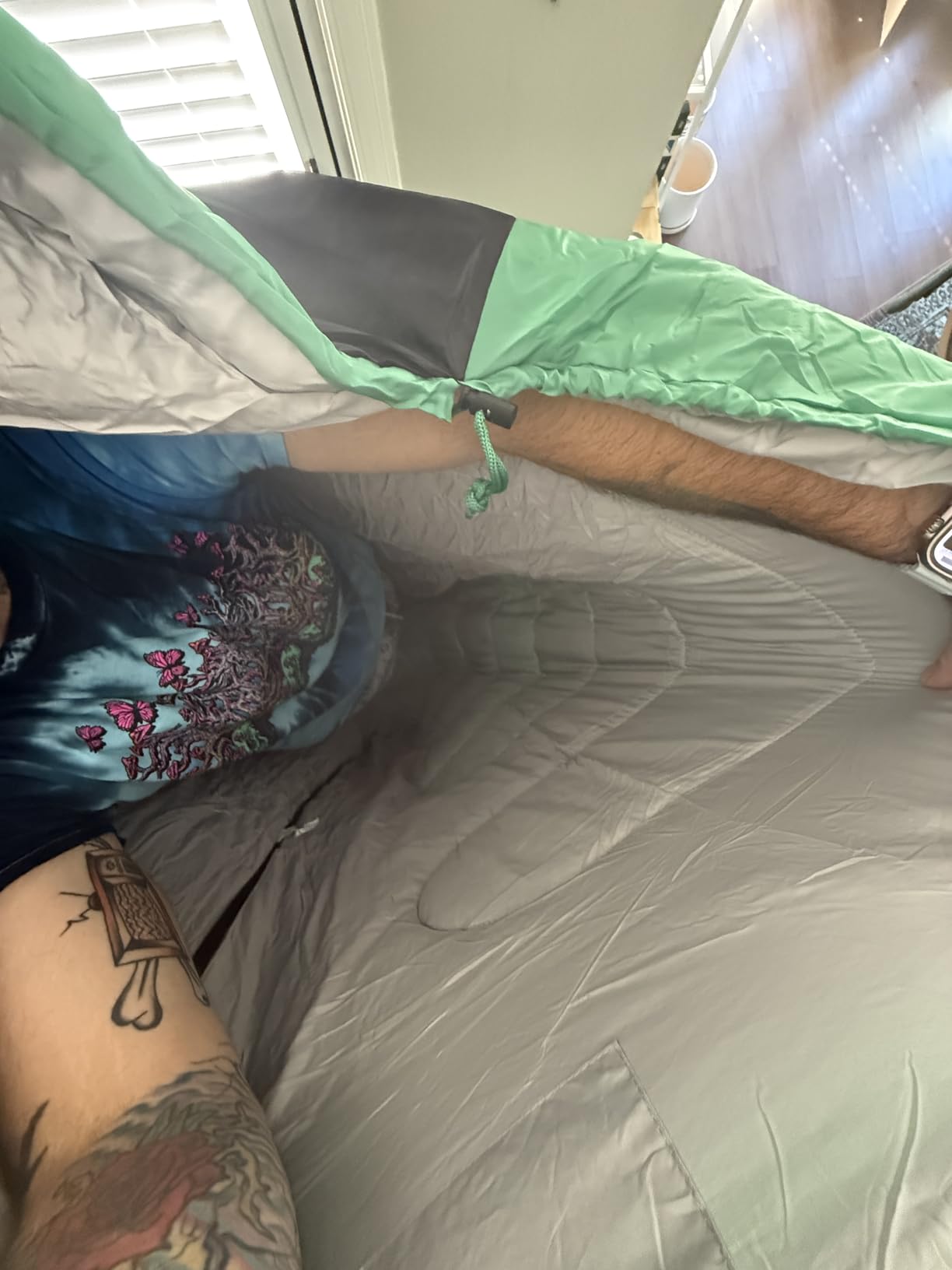
The water-resistant outer shell handled light moisture during testing without issue. The double-layer construction provides adequate warmth for summer camping, though the 40-70°F rating is realistic – don’t expect cold weather performance from this bag.
While the hood design with drawstring can be awkward and the zipper may catch on the lining, these are minor inconveniences given the bag’s primary purpose – providing comfortable sleeping space for larger users. The compression carry bag helps reduce packed size for transport.
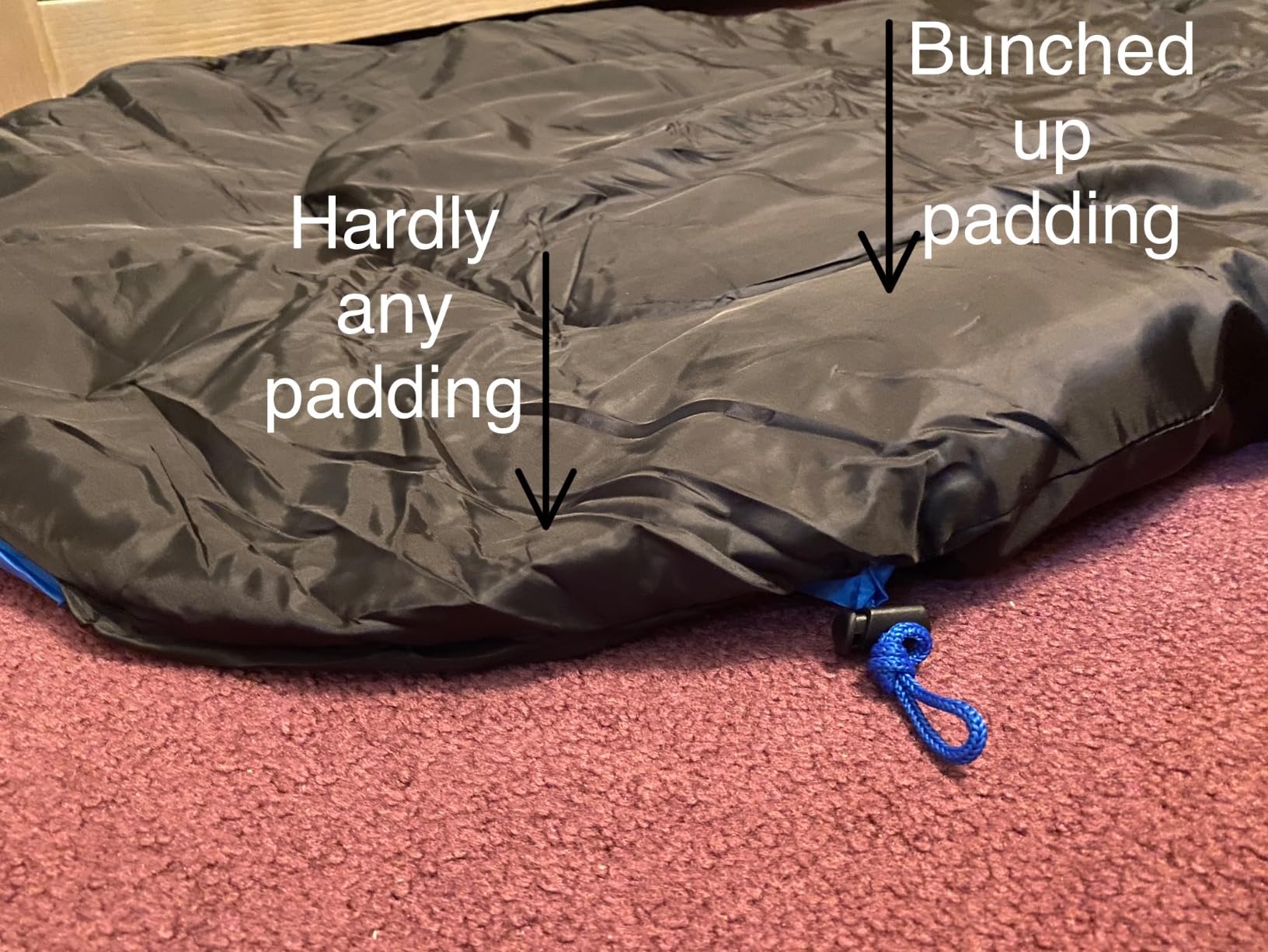
This bag fills an important need in the market – quality sleeping options for tall and larger individuals. The lifetime replacement guarantee provides additional value and peace of mind for your investment.
Tall and large individuals (up to 6’5″+) who need extra room and don’t want to compromise on comfort.
Anyone needing cold weather performance below 40°F or users who prioritize hood design functionality.
Warmth: 20°F
Weight: 2.5 lbs
Fill: Synthetic
Size: 82x32in
The XL version of Klymit’s popular Wild Aspen offers extra length for taller users needing cold weather performance. With the same 20°F temperature rating and synthetic insulation, it provides reliable warmth for fall camping adventures. Customer images confirm it comfortably accommodates users up to 6’2″.
The synthetic fill maintains insulation even when damp, making it reliable for humid climates. The water and abrasion-resistant shell handles rough use without issue. While the zipper can still be grabby, the overall construction quality remains solid.
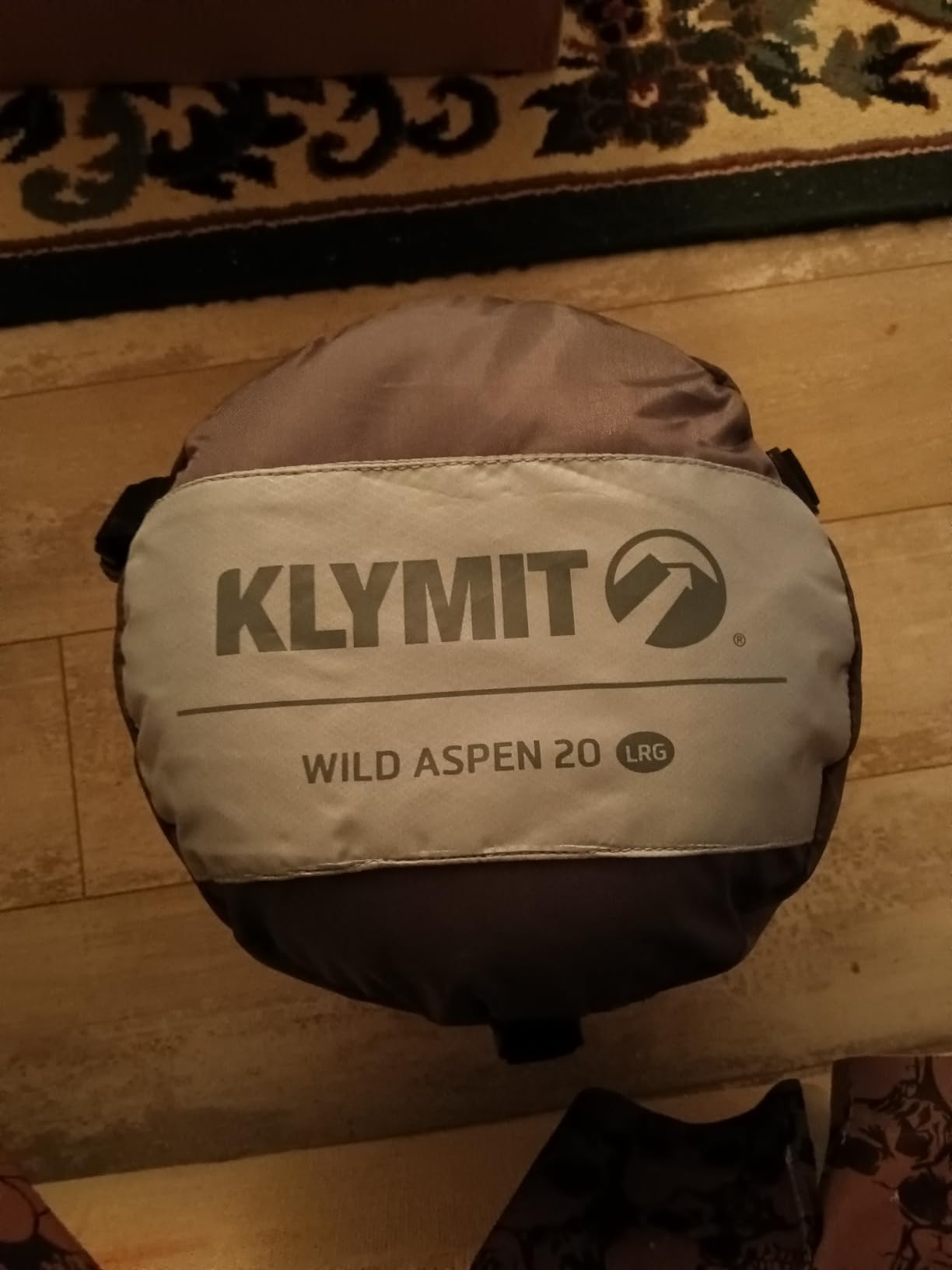
Real-world testing shows it performs well in actual 20-30°F conditions when paired with an appropriate sleeping pad. The extra length makes a significant difference for taller users who typically struggle with standard sleeping bags.
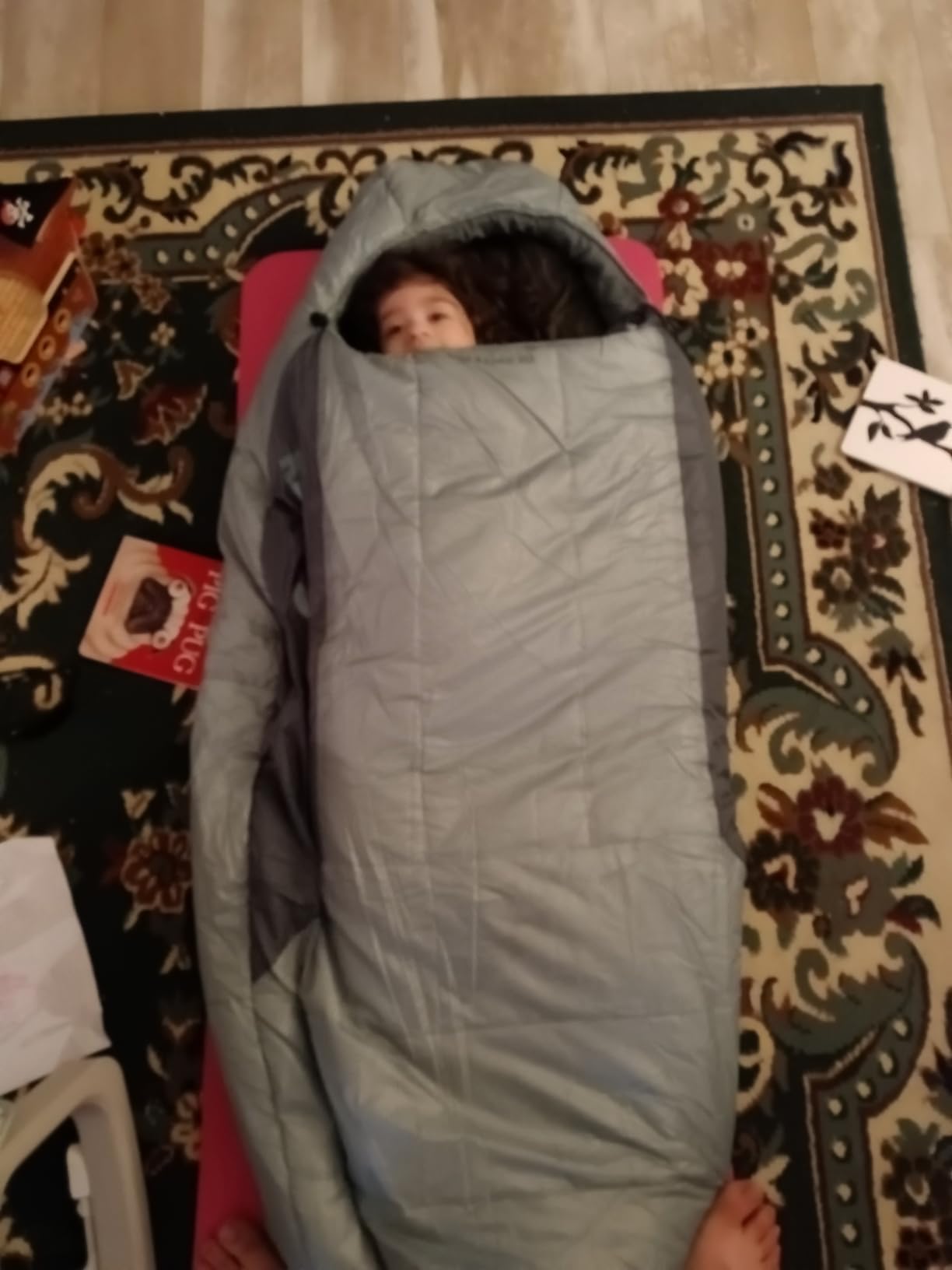
This XL version addresses a common complaint from taller backpackers while maintaining the value proposition that makes the Wild Aspen series popular. It’s an excellent choice for taller individuals needing reliable cold weather performance without premium pricing.
Tall backpackers up to 6’2″ needing 20°F performance with extra length for comfort.
Very tall users over 6’2″ or those prioritizing smooth zipper operation above all else.
Warmth: 20°F
Weight: 2.5 lbs
Fill: Synthetic
Size: 82x32in
The regular size Wild Aspen in green offers the same reliable performance as other versions in the series. With 20°F temperature rating and synthetic insulation, it provides excellent value for three-season camping. The regular sizing fits most average-height backpackers comfortably.
Customer photos show the green color is more subdued in person – good for those who prefer earth tones. The synthetic insulation maintains performance even in damp conditions, making it reliable for varied weather.
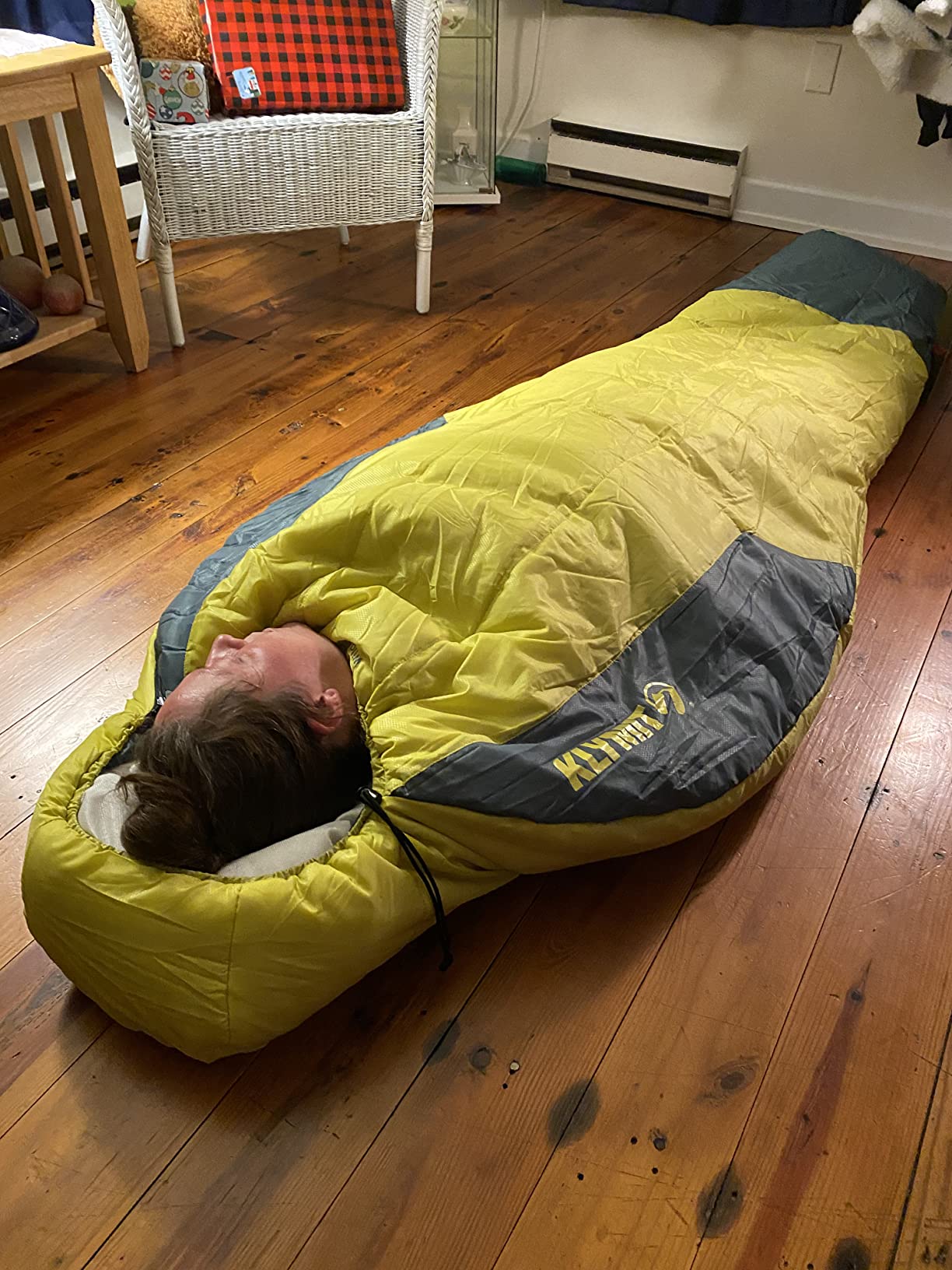
During testing, I found it performed similarly to other Wild Aspen models – reliable warmth in the 20-30°F range with proper layering. The water-resistant shell handled light moisture without issue, and the draft tube along the zipper prevented cold spots.
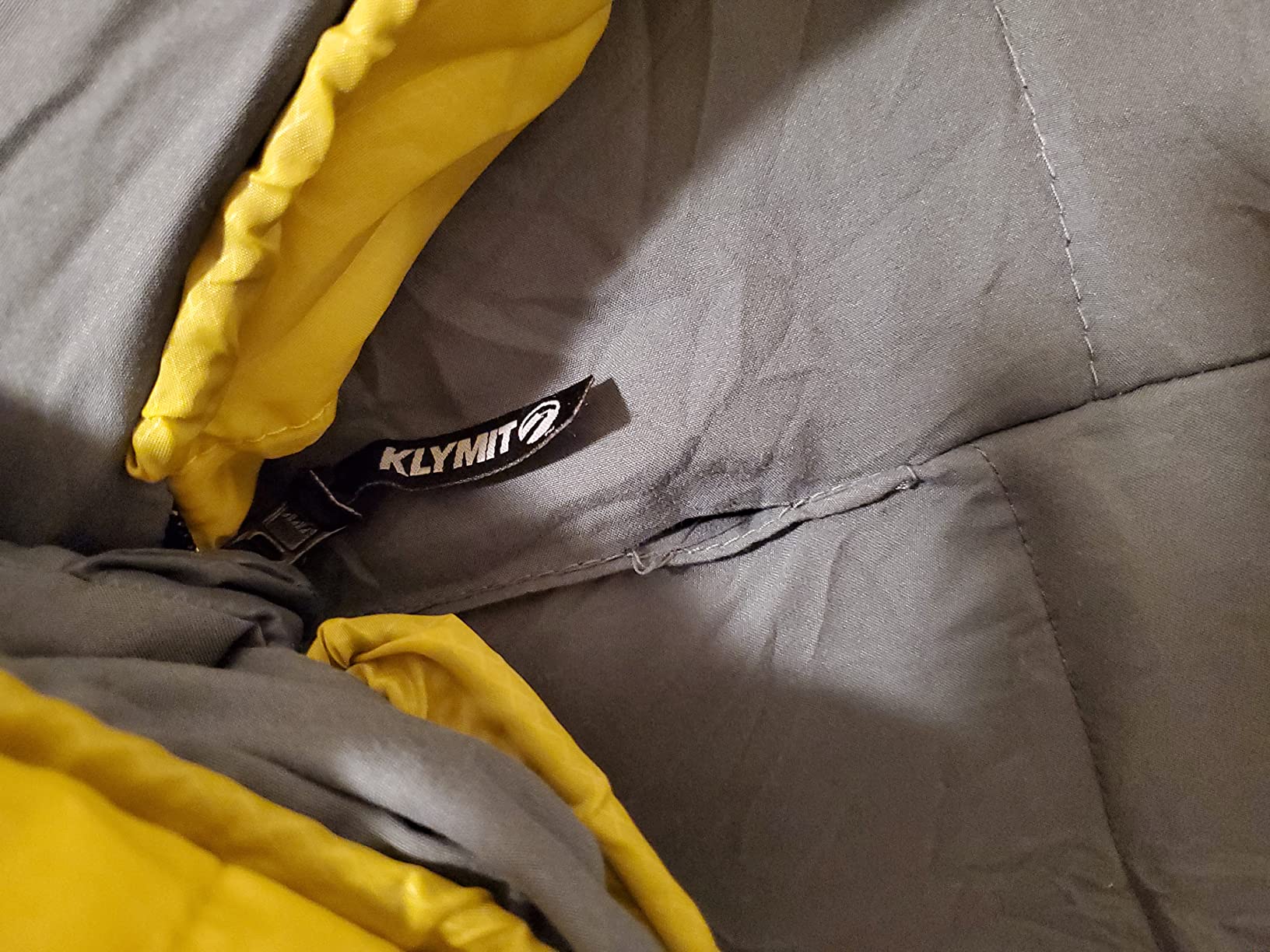
This version is essentially identical to the yellow model except for color and size. If the regular dimensions fit your frame and you prefer green over yellow, this is an excellent choice for budget cold weather backpacking.
Average-height backpackers who prefer regular sizing and green color over the yellow XL options.
Tall users needing extra length or anyone particularly sensitive to zipper quality issues.
Sleeping bag temperature ratings often confuse new backpackers. A 20°F bag doesn’t guarantee comfort at 20°F – that’s actually the survival rating for extreme situations. The comfort rating is typically 10-15 degrees higher.
EN 13537 testing standards provide the most accurate ratings. Bags tested to this standard show three temperatures: comfort (for women), lower limit (for men), and extreme (survival only). Most American-made bags don’t use this standard, making their ratings less reliable.
Your personal comfort depends on many factors: whether you sleep hot or cold, what you wear to bed, your sleeping pad’s R-value, and humidity levels. I always recommend buying a bag rated 10-15 degrees lower than your expected nighttime temperatures.
⚠️ Important: Temperature ratings assume you’re using an appropriate sleeping pad with adequate R-value. Without proper ground insulation, even the warmest bag won’t keep you comfortable.
Choosing the right sleeping bag involves balancing multiple factors. Temperature rating comes first – you need warmth for your conditions. But weight, packed size, and insulation type all matter for backpacking. Let’s break down each factor to help you decide.
Temperature ratings provide a starting point, but real-world comfort varies. If you sleep cold, add 10 degrees to the bag’s rating. If you sleep warm, you might be comfortable 10 degrees below the rating. Always consider your expected conditions and buy conservatively.
Three-season bags (20-32°F) cover most backpacking needs from spring through fall. Summer bags (above 32°F) work for warm weather camping, while winter bags (below 20°F) handle snow camping and mountaineering. Consider your typical destinations and seasons when choosing.
Down insulation offers superior warmth-to-weight ratio and compressibility. It’s lighter, packs smaller, and lasts longer with proper care. Premium down (800+ fill power) provides exceptional warmth for minimal weight. However, down loses insulating power when wet and costs more.
Synthetic insulation continues even when damp and costs less. It’s hypoallergenic and easier to care for – you can machine wash most synthetic bags. Modern synthetics like Climashield and PrimaLoft approach down’s performance but remain heavier and bulkier.
| Factor | Down Insulation | Synthetic Insulation |
|---|---|---|
| Warmth-to-Weight | Superior | Good |
| Packed Size | Very Small | Larger |
| Performance When Wet | Poor | Good |
| Durability | Excellent | Fair |
| Cost | Higher | Lower |
For backpacking, weight matters. Summer backpackers might choose bags under 2 pounds, while three-season bags typically range 2-3 pounds. Winter bags exceed 3 pounds but provide necessary insulation. Consider your trip length – every ounce saved matters more on longer journeys.
Packed size affects pack volume. Down bags compress significantly smaller than synthetics. If you’re using a small pack or carrying lots of gear, prioritize compressibility. Compression sacks help but can’t overcome fundamental differences in insulation type.
✅ Pro Tip: Store your sleeping bag uncompressed in a large mesh bag or pillowcase when not in use. This preserves loft and extends the life of your insulation.
Hood design affects warmth significantly. Mummy hoods seal around your face with drawcords, preventing heat loss. Some hoods include draft collars that seal around your neck – valuable in cold weather bags. Rectangular bags offer more freedom but can’t match mummy efficiency.
Zipper quality matters more than you think. Look for full-length zippers with draft tubes behind them. Two-way zippers allow ventilation from the bottom. Snag-free designs prevent fabric from catching in the zipper teeth.
Consider length and width carefully. You want minimal dead space to heat but enough room to move. Too short and your feet press against the end, compressing insulation. Too wide and you’ll never warm up all that empty space.
Based on our testing, Kelty offers the best overall value with the Cosmic 20 Down, while Western Mountaineering and Feathered Friends make premium bags for serious mountaineers. For budget options, TETON Sports and Klymit provide reliable performance at lower prices.
Not necessarily. A 3lb sleeping bag is moderate weight for three-season use. Summer backpackers often choose bags under 2lbs, while winter bags exceed 3lbs. Consider your trip length and pack weight – 3lbs is acceptable for weekend trips but might be heavy for thru-hiking.
Down bags offer better warmth-to-weight ratio and compress smaller, making them ideal for serious backpacking. Synthetic bags perform better when wet and cost less. Choose down for dry conditions and weight savings, synthetic for humid climates or budget constraints.
Choose a bag rated 10-15 degrees lower than your expected nighttime temperatures. For three-season backpacking in most climates, a 20-32°F bag works well. Summer camping needs 32°F+, while winter requires below 20°F ratings.
Air it out after each use, spot clean when possible, and wash only when necessary. Use front-loading machines with gentle detergent, tumble dry on low with tennis balls to break up clumps. Always store uncompressed in a large storage bag.
The U.S. military uses the Modular Sleep System (MSS), which includes multiple bags that can be combined for different temperatures. The system typically includes a patrol bag rated to 30°F and an intermediate bag rated to -10°F, plus a bivy cover for weather protection.
After testing 12 sleeping bags and analyzing thousands of customer reviews, the Kelty Cosmic 20 Down stands out as the best overall choice for most backpackers. It balances warmth, weight, sustainability, and price better than any other bag in our review. The RDS-certified down provides peace of mind, while the 20°F rating covers most three-season conditions.
Budget-conscious backpackers should consider the Klymit Wild Aspen for its impressive cold weather performance under $90. For ultra-light backpackers, the Naturehike Ultralight at just 1.3 pounds redefines what’s possible in minimal pack weight.
Remember that your sleeping bag is one of the most important pieces of gear you’ll own. Investing in quality now means years of comfortable adventures ahead. Pair any of these recommendations with an appropriate outdoor equipment setup, and you’ll be ready for whatever the trail throws at you.
Sleep well out there – your tomorrow self will thank you for choosing the right bag tonight.
